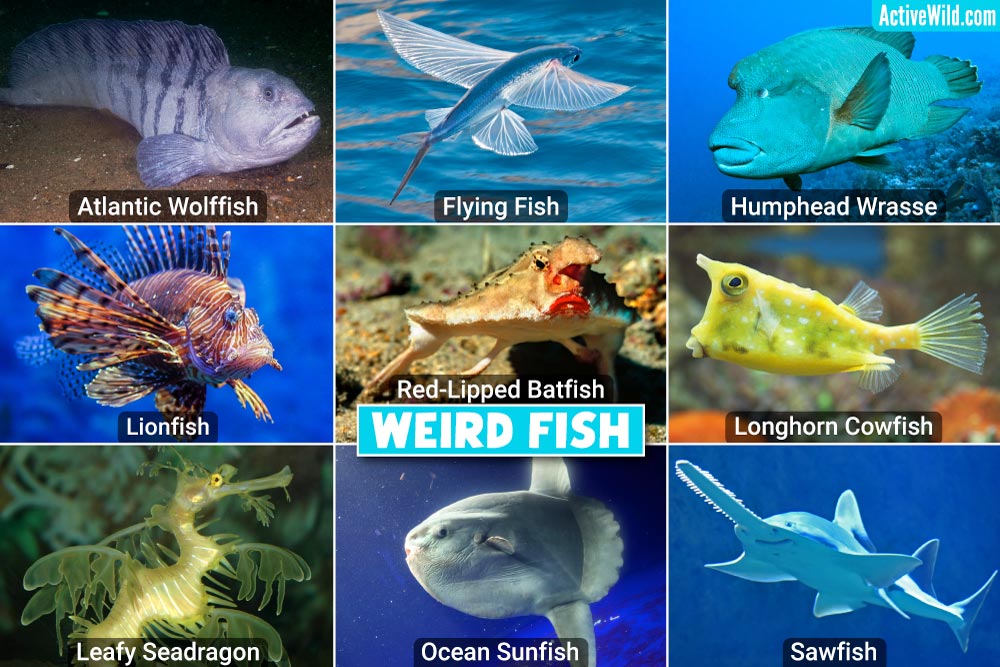Weird fish include the ocean sunfish, a mysterious ocean giant; the coelacanth, a living fossil once thought to have been extinct; the humphead wrasse, a reef fish that starts life as a female but later becomes male; the bizarre-looking red-lipped batfish, found around the Galápagos Islands; and freshwater species such as the candiru and alligator gar.
On this page we take a look at these and many more strange fish from the world's oceans, rivers and lakes.
Have you seen any of these species? What's your favorite? Are there any weird fish we’ve missed out? Let us know in the comments section at the bottom of the page!
Use the index below to go directly to a particular species, or continue scrolling to browse all of these bizarre creatures.
Weird Fish
- Alligator Gar
- Atlantic Wolffish
- Barreleye Fish
- Blobfish
- Blue Parrotfish
- Candiru
- Coelacanth
- Fangtooth
- Flying Fish
- Frilled Shark
- Frogfish
- Giant Oarfish
- Goblin Shark
- Humphead Wrasse
- Jawfish
- Leafy Seadragon
- Lionfish
- Longhorn Cowfish
- Megamouth Shark
- Mekong Giant Catfish
- Moonfish
- Ocean Sunfish
- Ocellated Icefish
- Psychedelic Frogfish
- Red-Bellied Pacu
- Red-Lipped Batfish
- Sawfish
- Stargazer
- Yellow Boxfish
You can see more weird species on the following pages:
Weird Animals Pictures & Facts
Weird Amphibians Pictures & Facts
Weird Birds Pictures & Facts
Weird Insects Pictures & Facts
Weird Mammals Pictures & Facts
Weird Reptiles Pictures & Facts
Weird Sea Creatures Pictures & Facts
Weird Plants Pictures & Facts
Ugly Animals Pictures & Facts
Discover More About Animals
Discover More About Fish
You can find out more about fish on this page: Fish – The Ultimate Guide
Discover different types of fish on this page: Types of Fish
Alligator Gar
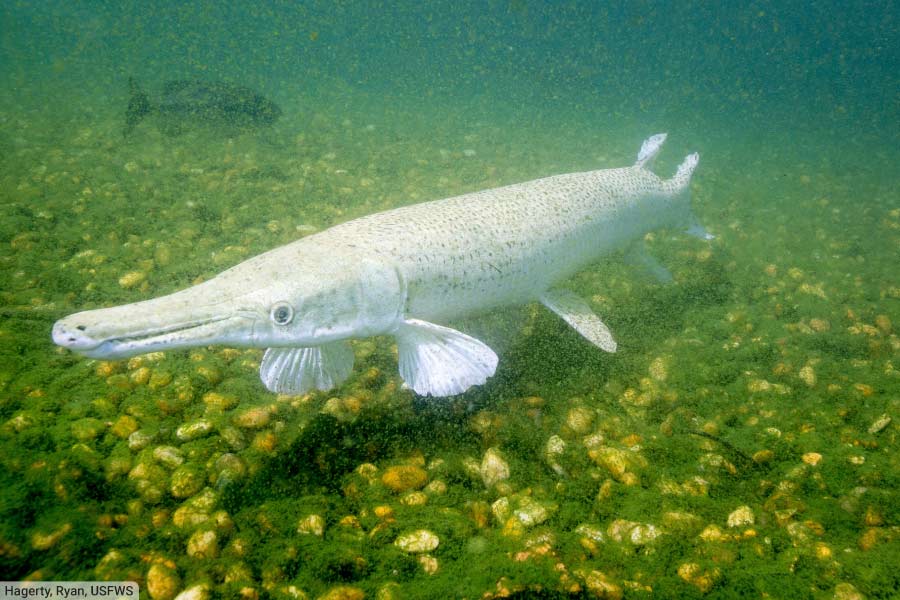
Scientific name: Atractosteus spatula
Family: Lepisosteidae
IUCN conservation status: Least Concern
The Alligator Gar is a large freshwater fish native to North America. This unusual-looking species is one of the largest freshwater fish in North America, with some individuals exceeding 300 pounds in weight and reaching over 8 feet in length. Its name comes from its broad, alligator-like snout, which is filled with razor-sharp teeth.
The Alligator Gar is a top predator in its ecosystem and is known to eat fish, turtles, and even small mammals. Despite its fearsome reputation, it is not a threat to humans, and is actually a popular game fish for recreational fishing. The Alligator Gar has a long lifespan, and may live for several decades in the wild.
Discover More With Active Wild
You can see more North American animals on this page: North American Animals
You can see more freshwater animals on this page: Freshwater Animals
Atlantic Wolffish

Scientific name: Anarhichas lupus
Family: Anarhichadidae
IUCN conservation status: Vulnerable
The Atlantic Wolffish is a cold-water fish found in the North Atlantic Ocean from Greenland to Massachusetts.
The fish has a distinctive appearance, with a large head and powerful jaws filled with sharp teeth. Its body is elongated and covered in dark, mottled scales, giving it a somewhat snake-like appearance.
Despite its intimidating appearance, the Atlantic Wolffish, which grows up to 1.5 m in length, is not typically dangerous to humans. It feeds primarily on crustaceans, mollusks, and other fish.
The Atlantic Wolffish is valued for its meat, which is considered a delicacy in some parts of the world. The fish is considered a vulnerable species due to overfishing and habitat destruction, and is now protected in many areas.
Discover More With Active Wild
You can see more ocean animals on this page: Ocean Animals List with Pictures & Facts
Barreleye Fish
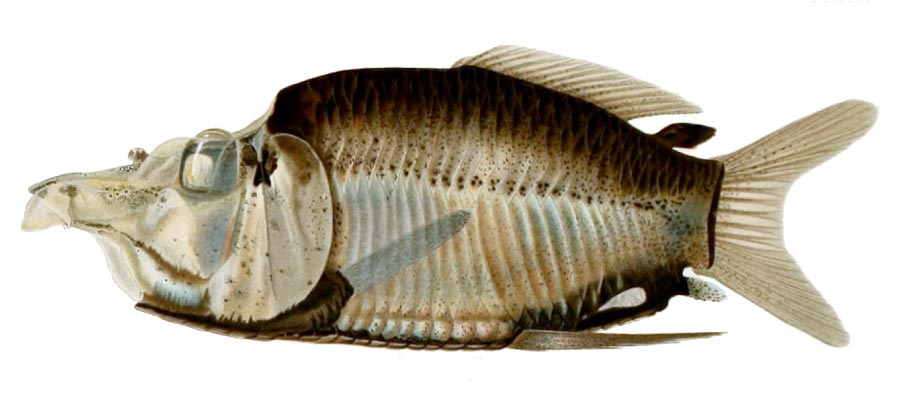
Family: Opisthoproctidae
Example species: Macropinna microstoma
Barreleyes, also known as spookfish, are small deep-sea fish. The 21 currently-recognized species make up the family Opisthoproctidae. (source) Barreleyes have a weird transparent head, which allows them to see upwards through their skull to detect prey above them. They also have large, telescopic eyes that can rotate within the transparent dome of their head to track prey or predators.
Discover More With Active Wild
You can see more ocean animals on this page: Ocean Animals List with Pictures & Facts
Blobfish
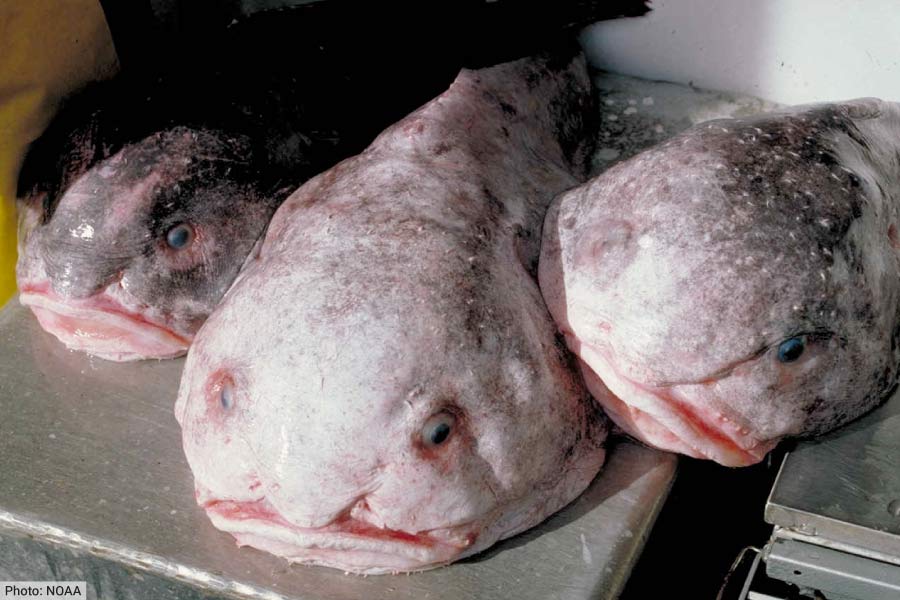
Scientific name: Psychrolutes marcidus
Family: Psychrolutidae
IUCN conservation status: Unassessed
The Blobfish, or smooth-head blobfish, is a deep-sea fish found off the coasts of Australia, Tasmania, and New Zealand. It has a distinctive gelatinous appearance, which has led to its somewhat unflattering name.
The Blobfish's body is adapted to survive at extreme depths, with a very low density that allows it to float just above the seafloor.
In its native habitat, the blobfish looks almost normal; only when brought to the surface – where there is substantially less pressure – does the fish begin to look “blobby”.
Discover More With Active Wild
You can see more ugly animals on this page: Ugly Animals List with Pictures & Facts
Blue Parrotfish
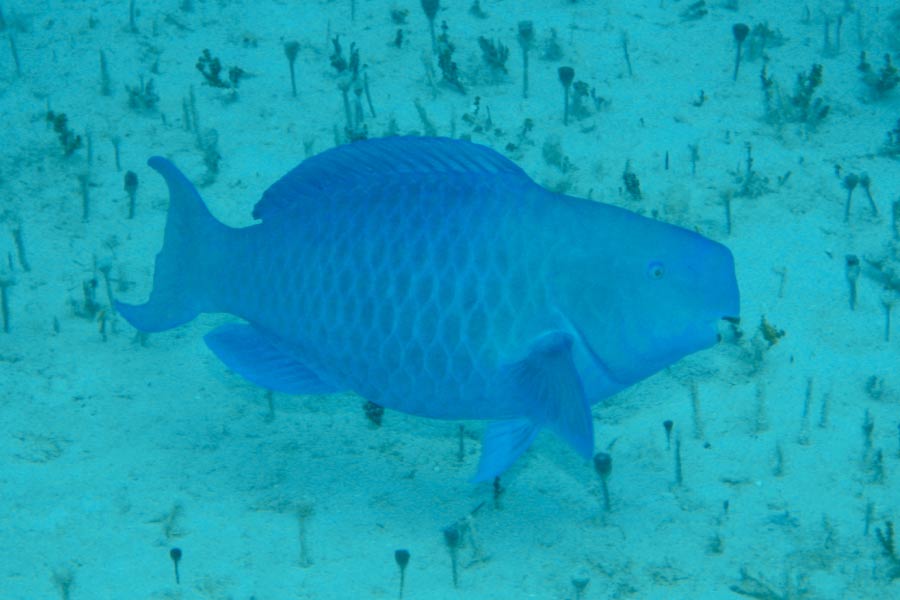
Scientific name: Scarus coeruleus
Family: Scaridae
IUCN conservation status: Least Concern
The Blue Parrotfish is a brightly-colored fish that inhabits the coral reefs of the Western Atlantic Ocean, ranging from Florida to Brazil. It is named for its parrot-like beak, which it uses to scrape algae from coral reefs.
The Blue Parrotfish is a key player in the health of coral reef ecosystems, as it helps to prevent the overgrowth of algae that can harm corals.
The species can grow up to 1.2 meters in length and can weigh up to 20 kilograms. It is a popular target for recreational fishermen, and is also commercially harvested for food. Despite this, the Blue Parrotfish is considered Least Concern by the IUCN, as it is relatively widespread and not significantly threatened by overfishing.
Discover More With Active Wild
You can see more ocean animals on this page: Ocean Animals List with Pictures & Facts
Candiru
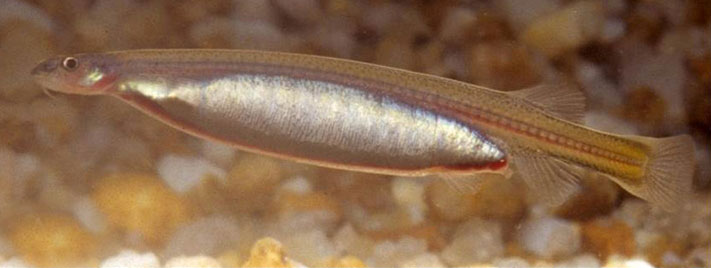
Scientific name: Vandellia cirrhosa
IUCN conservation status: Not Evaluated
The Candiru, also known as the vampire fish or toothpick fish, is a species of parasitic freshwater catfish native to the Amazon Basin in South America.
This weird fish is infamous for its supposed ability to enter human orifices, causing severe pain and potentially life-threatening complications.
Despite this reputation, confirmed cases of candiru entering human bodies are very rare, and most reported cases are based on hearsay or anecdotal evidence.
The Candiru typically feeds on the blood of larger fish, and its small size and slippery skin allow it to enter gill slits or other orifices of larger fish. It has a slender and elongated body, and its jaws are equipped with sharp teeth that it uses to attach itself to its host.
The Candiru is typically less than 10 cm in length and is generally a gray-brown color, with a flattened head and body.
Discover More With Active Wild
You can see more rainforest animals on this page: Rainforest Animals List with Pictures & Facts
You can see more South American animals on this page: South American Animals
Coelacanth

Scientific name: Latimeria chalumnae
Family: Latimeriidae
IUCN conservation status: Critically Endangered
The West Indian Coelacanth is a rare fish thought to be extinct until its rediscovery in 1938 off the coast of South Africa.
The species is often referred to as a "living fossil" because it has changed very little over the past 400 million years, and is thought to be an important link in the evolution of fish to terrestrial vertebrates (including humans). Somewhere in your family tree is a weird fish resembling a coelacanth!
The West Indian Coelacanth is one of two living species of Coelacanth, the other being the Indonesian coelacanth (Latimeria menadoensis).
The Coelacanth can grow up to 2 meters in length and weigh up to 90 kilograms. It is found in deep waters around the Comoro Islands off the coast of East Africa, and is a slow-growing, long-lived species. The species is considered Critically Endangered by the IUCN due to overfishing, bycatch in deep-sea trawling, and habitat destruction.
Discover More With Active Wild
You can find out more about this weird fish on this page: Coelacanth Facts
Fangtooth
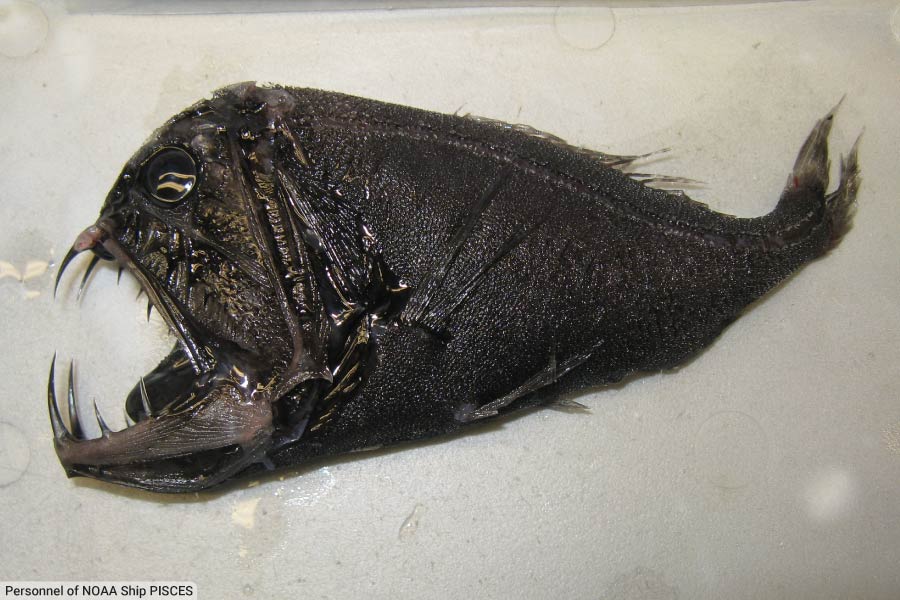
Scientific name: Anoplogaster cornuta
Family: Anoplogastridae
IUCN conservation status: Least Concern
The Common Fangtooth is a deep-sea fish that is found in the world's oceans, typically at depths of over 500 meters. It is a small fish, growing up to 18 cm in length, but it is known for its intimidating appearance.
The Fangtooth has a large head with oversized, sharp teeth that give it a menacing look. Despite its appearance, the Fangtooth is not a threat to humans, as it is a relatively small fish that lives in deep waters.
This weird fish is not commercially fished, and its population is considered stable. Therefore, it is classified as Least Concern by the IUCN.
Discover More With Active Wild
You can see more ugly animals on this page: Ugly Animals List with Pictures & Facts
Flying Fish
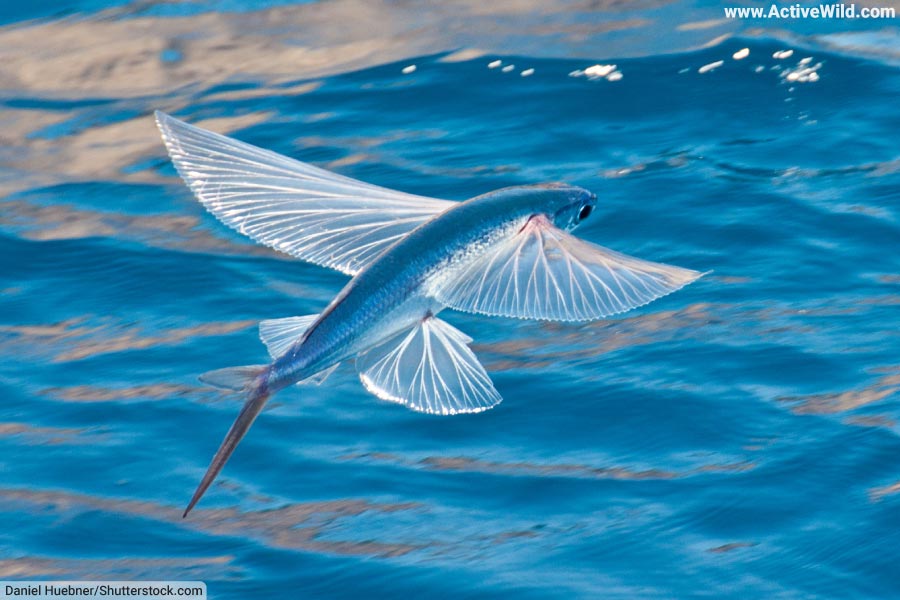
Scientific name: Exocoetidae
Family: Exocoetidae
IUCN conservation status: Not evaluated
Flying fish are a group of about 50 species of fish that are found in tropical and subtropical waters around the world. They are named for their ability to leap out of the water and "fly" through the air, which they do to escape predators.
Flying fish have a streamlined body and large, wing-like fins that allow them to glide through the air for distances of up to 400 meters at a time.
The fish are an important food source for many larger predatory fish and birds. Flying fish are not typically targeted by commercial fisheries, but they are sometimes caught accidentally as bycatch.
Discover More With Active Wild
You can see more ocean animals on this page: Ocean Animals List with Pictures & Facts
Frilled Shark
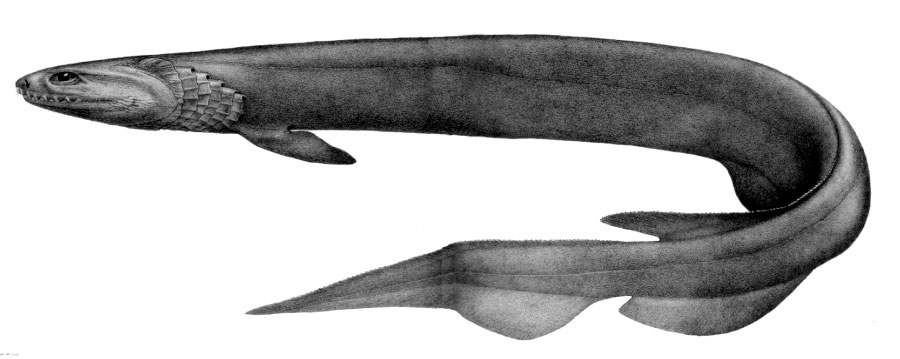
Scientific name: Chlamydoselachus anguineus
Family: Chlamydoselachidae
IUCN conservation status: Near Threatened
The Frilled Shark is a weird deep-sea shark found in both the Atlantic and Pacific Oceans, typically at depths of up to 1500 meters. It has a distinctive appearance, with a long, eel-like body and a “frilly”, or ruffled, appearance around its gill slits.
The Frilled Shark can grow up to 2 meters in length and is a slow-moving, sluggish predator that feeds on a variety of fish and squid. It is rarely seen by humans and is not commercially fished, but it is sometimes caught accidentally as bycatch.
The species is classified as Near Threatened by the IUCN due to its low reproductive rate and susceptibility to overfishing.
Discover More With Active Wild
Find out more about sharks on this page: Shark Facts
Discover different types of sharks on this page: Types of Sharks
Frogfish
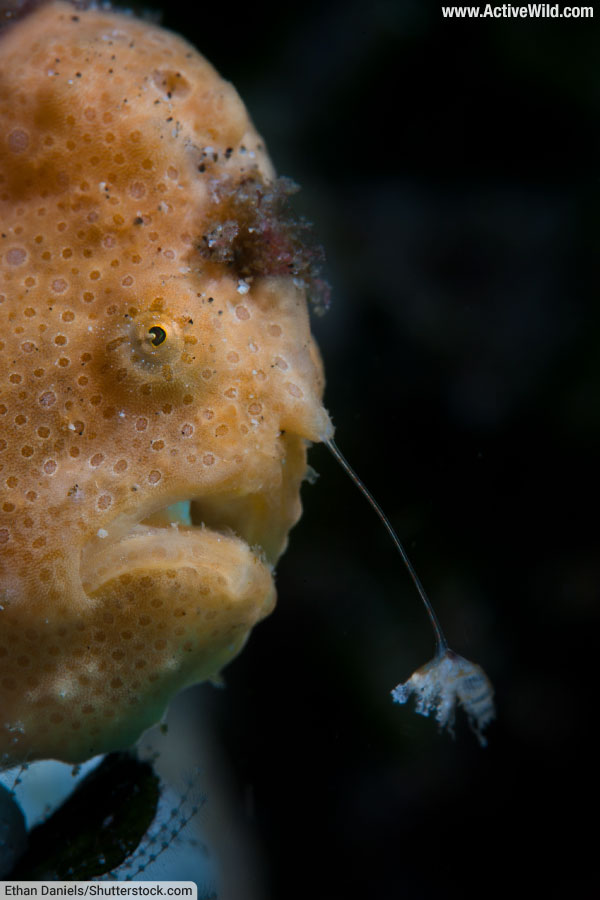
Family: Antennariidae
Frogfish are a family of small, bottom-dwelling anglerfish that are found in tropical and subtropical waters around the world. They are named for their frog-like appearance and behavior, as they have a broad, flattened body and are able to "walk" along the seabed using their fins.
Frogfish are ambush predators that feed on small fish and crustaceans. They are able to change color and texture to blend in with their surroundings, making them difficult to spot by both prey and predators.
Frogfish are popular among divers and underwater photographers due to their unusual appearance and behavior.
Discover More With Active Wild
You can see more ugly animals on this page: Ugly Animals List with Pictures & Facts
Giant Oarfish
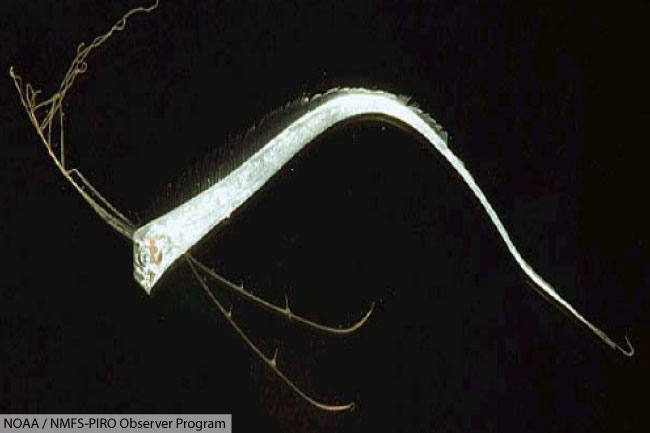
Scientific name: Regalecus glesne
Family: Regalecidae
IUCN conservation status: Least Concern
The Giant Oarfish is a deep-sea fish that is found in temperate and tropical waters around the world. It is the longest bony fish in the world, with specimens known to reach lengths of up to 11 meters.
The Giant Oarfish has a long, slender body that is covered in iridescent, silvery scales, and it has a distinctive, crest-like structure on its head.
Despite its size, the Giant Oarfish is a solitary creature that feeds on plankton and small fish. It is not commercially fished, and its population is considered stable.
Discover More With Active Wild
You can see more ocean animals on this page: Ocean Animals List with Pictures & Facts
Goblin Shark
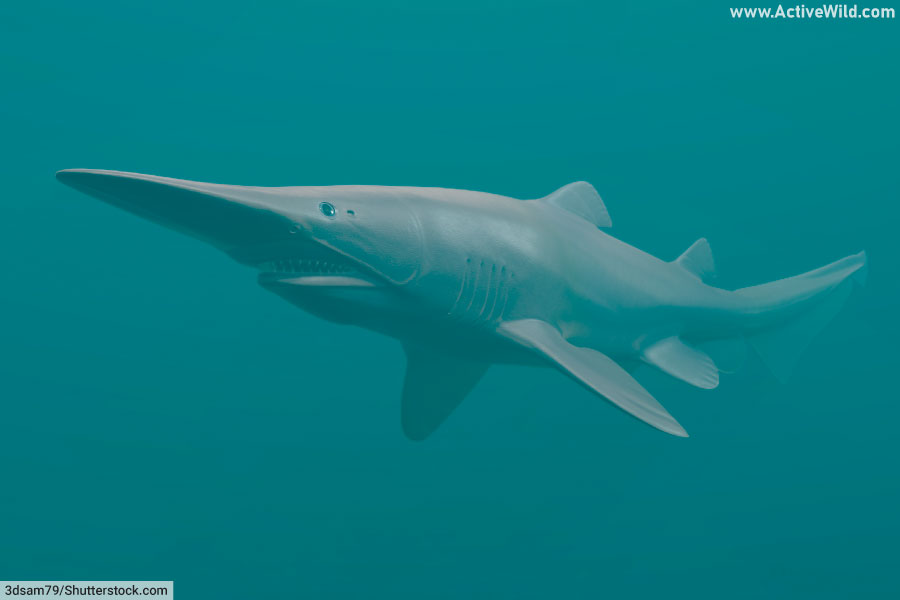
Scientific name: Mitsukurina owstoni
Family: Mitsukurinidae
IUCN conservation status: Near Threatened
The Goblin Shark is a deep-sea shark found in oceans around the world, typically at depths of up to 1300 meters. It has a distinctive, long, flattened snout that is covered in electroreceptor organs, which it uses to detect the electric fields of its prey.
The Goblin Shark can grow up to 4 meters in length and is a sluggish predator that feeds on a variety of fish and squid. It is rarely seen by humans and is not commercially fished, but it is sometimes caught accidentally as bycatch. The Goblin Shark is classified as Near Threatened by the IUCN due to its low reproductive rate and susceptibility to overfishing.
Discover More With Active Wild
Find out more about sharks on this page: Shark Facts
Discover different types of sharks on this page: Types of Sharks
Humphead Wrasse
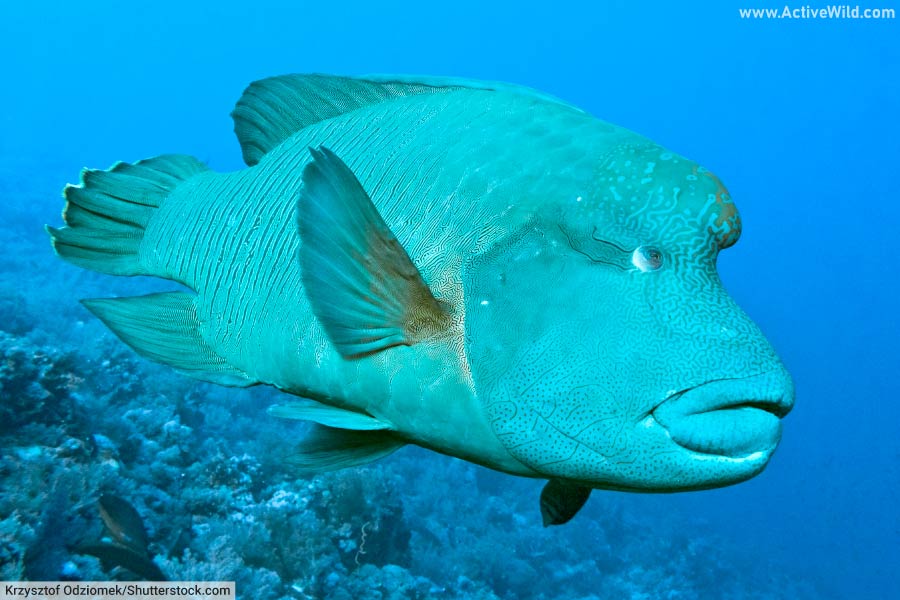
Scientific name: Cheilinus undulatus
Family: Labridae
IUCN conservation status: Endangered
The Humphead Wrasse, also known as the Napoleon Wrasse, is a large, colorful fish that can be found in the tropical waters of the Indo-Pacific region.
The species is a solitary and slow-growing fish, and can live for up to 30 years in the wild. The Humphead Wrasse is easily recognizable by its hump on the forehead, which gives it its name, and by its large size; the species can grow up to 6 feet in length and weigh over 400 pounds.
Unfortunately, the Humphead Wrasse is listed as Endangered by the IUCN due to overfishing for the live reef fish trade and habitat destruction.
The humphead wrasse is a striking-looking animal, but that’s not why it’s been included in this list of weird fish. The real reason is that it – and many other wrasse (including the equally strange-looking Asian sheepshead wrasse, Semicossyphus reticulatus) – change sex from female to male as they get older. This only occurs in the largest individuals.
Discover More With Active Wild
You can find out more about this animal on this page: Humphead Wrasse Facts
You can see more endangered animals on this page: Endangered Animals
Jawfish
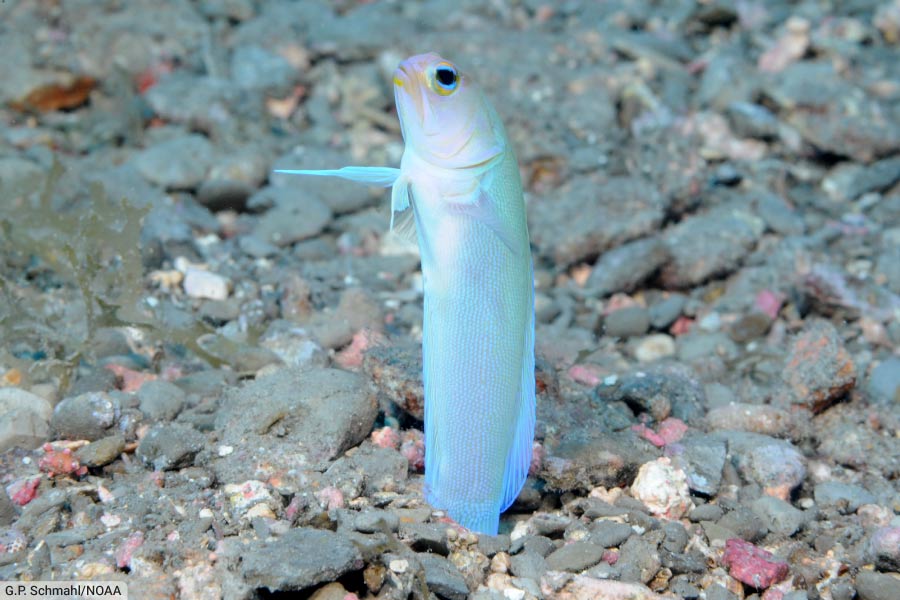
Family: Opistognathidae
Jawfish are a family of small, bottom-dwelling fish that are found in shallow waters in tropical and subtropical regions around the world. They are named for their prominent jaws, which they use to excavate burrows in the sand or rubble on the ocean floor.
These weird fish are mouthbrooders - the female jawfish lays the eggs, which the male jawfish then keeps safe from harm in its mouth until they hatch!
Jawfish are typically less than 30 cm in length and feed on small crustaceans and other invertebrates. They are popular among aquarium enthusiasts due to their colorful appearance and interesting behavior.
Discover More With Active Wild
You can see more ocean animals on this page: Ocean Animals List with Pictures & Facts
Leafy Seadragon

Scientific name: Phycodurus eques
Family: Syngnathidae
IUCN conservation status: Near Threatened
The leafy seadragon is a unique and fascinating marine fish found only in the southern coastal waters of Australia. It is a member of the Syngnathidae family, which also includes seahorses and pipefish.
The leafy seadragon is named for its appearance; its dragon-like body is covered in leaf-like projections that provide excellent camouflage. The species can grow up to 45 cm in length and is generally found in seaweed beds and rocky reefs in shallow coastal waters.
This weird fish feeds on small crustaceans and plankton. Unfortunately, due to habitat loss, pollution, and collection for the aquarium trade, the population of leafy seadragons has been declining. The species is currently classified as Near Threatened by the IUCN.
Discover More With Active Wild
You can see more Australian animals on this page: Australian Animals
Lionfish
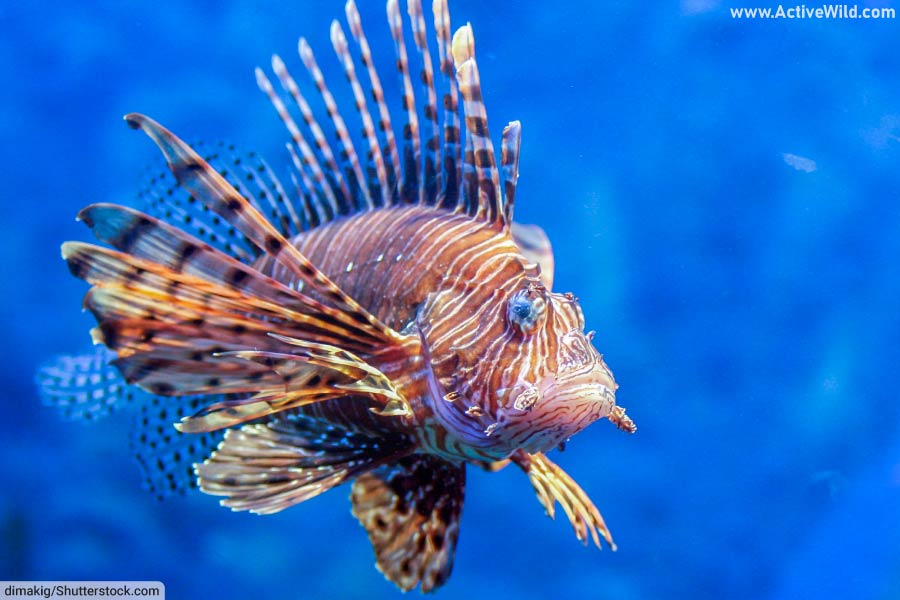
Scientific name: Pterois volitans
Family: Scorpaenidae
IUCN conservation status: Least Concern
Lionfish are venomous marine fish native to the tropical Indo-Pacific region. These striking species have become invasive species in many other parts of the world due to their popularity in the aquarium trade.
Lionfish are known for their distinctive, brightly colored fins and spiky appearance, which they use to intimidate predators. Lionfish such as the red lionfish, Pterois volitans, can grow up to 38 cm in length and feed on a variety of fish, crustaceans, and other small marine organisms.
Unfortunately, Lionfish are causing significant ecological damage in their non-native habitats, as they have no natural predators and can reproduce rapidly.
Discover More With Active Wild
You can see more ocean animals on this page: Ocean Animals List with Pictures & Facts
Longhorn Cowfish
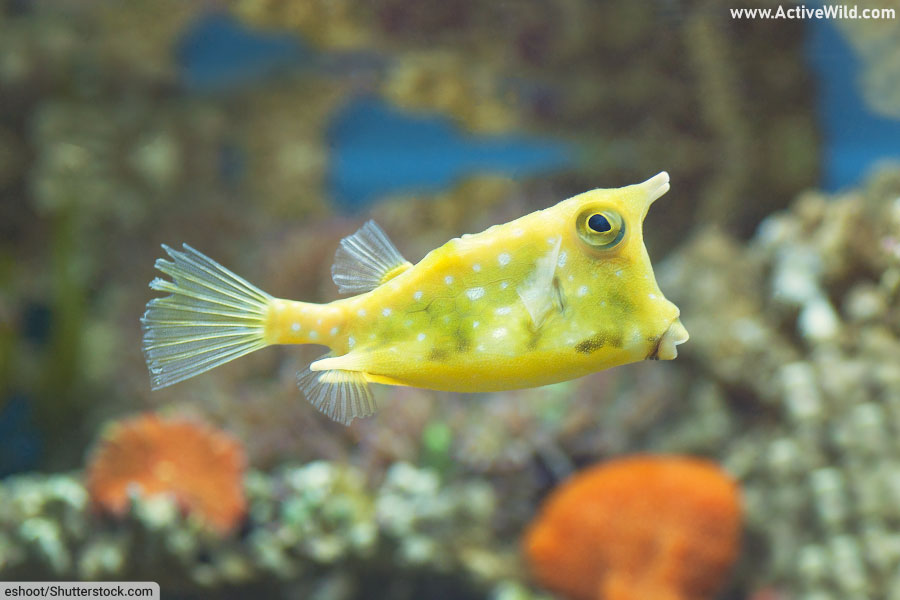
Scientific name: Lactoria cornuta
Family: Ostraciidae
IUCN conservation status: Unassessed
The Longhorn Cowfish is an odd marine fish found in the tropical waters of the Indo-Pacific region. It is a member of the Ostraciidae family, which includes boxfish and trunkfish.
The Longhorn Cowfish gets its name from the distinctive long, pointed horns on its head, which it uses for defense and to probe for food. The projections may also make the fish more difficult to swallow by predators. When stressed, this weird fish is thought to be able to secrete poison from its skin.
The species can grow up to 50 cm in length and is typically found in shallow coral reefs and seagrass beds.
The Longhorn Cowfish feeds on a variety of small invertebrates, crustaceans, and algae. They can be found in the aquarium trade but can be challenging to keep in captivity.
Discover More With Active Wild
You can see more ocean animals on this page: Ocean Animals List with Pictures & Facts
Megamouth Shark
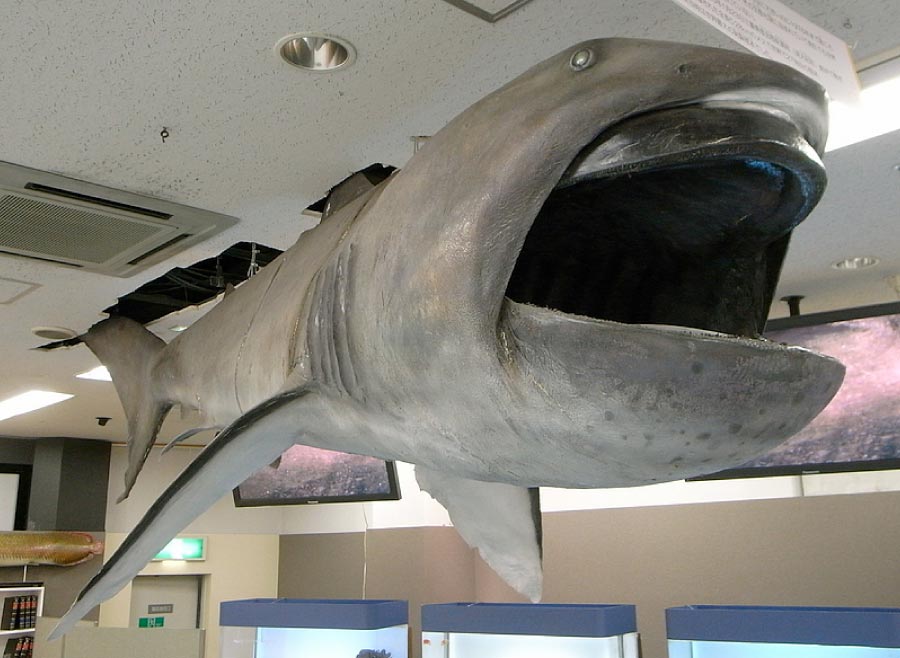
Scientific name: Megachasma pelagios
Family: Megachasmidae
IUCN conservation status: Data Deficient
The Megamouth Shark is a rare and enigmatic deep-sea shark that was first discovered in 1976. It is a member of the family Megachasmidae, and is one of only three extant species in this family, along with the Whale Shark and Basking Shark.
The Megamouth Shark gets its name from its weirdly large mouth, which it uses to filter feed on plankton and small fish. The species can grow up to 5.5 meters in length and is typically found in deep waters between 120 and 1,200 meters. Not much is known about the biology or behavior of the Megamouth Shark, as it is difficult to study due to its rarity and deep-sea habitat. The species is currently classified as Data Deficient by the IUCN.
Discover More With Active Wild
Find out more about sharks on this page: Shark Facts
Discover different types of sharks on this page: Types of Sharks
Mekong Giant Catfish

Scientific name: Pangasianodon gigas
Family: Pangasiidae
IUCN conservation status: Critically Endangered
The Mekong Giant Catfish is a large freshwater fish native to the Mekong River in Southeast Asia. The species is the largest freshwater fish in the world, growing up to 3 meters in length and weighing up to 300 kilograms.
Today, the Mekong Giant Catfish is Critically endangered due to overfishing, habitat loss, and the construction of dams and other water development projects. Its population has declined dramatically in recent years, and it is estimated that there are now only a few hundred individuals left in the wild.
The Mekong Giant Catfish is considered a delicacy in many parts of Asia and is highly prized in the commercial fish trade, which has contributed to its decline. Efforts are being made to protect and conserve the species, but its future remains uncertain.
Discover More With Active Wild
You can see more critically endangered animals on this page: Critically Endangered Species
Moonfish

Scientific name: Lampris guttatus
Family: Lampridae
IUCN conservation status: Least Concern
The Opah, also known as the Moonfish, is a large and colorful deep-sea fish that is found in temperate and tropical oceans around the world.
The species is a member of the family Lampridae, which also includes the Oarfish and the Ribbonfish. It has a distinctive circular body shape and is one of the very few “warm-blooded” fish that are capable of maintaining a body temperature higher than the surrounding water.
This ability makes the moonfish an effective predator in the cold depths of the ocean, where it primarily feeds on squid and small fish.
The Opah is not a targeted species in commercial fisheries, but it is sometimes caught as bycatch.
Discover More With Active Wild
You can see more ocean animals on this page: Ocean Animals List with Pictures & Facts
Ocean Sunfish

Scientific name: Mola mola
Family: Molidae
IUCN conservation status: Vulnerable
The Ocean Sunfish, also known as the Moonfish, is a unique and distinctive fish that is found in tropical and temperate oceans around the world. It is one of the largest bony fish in the world, and can grow up to 3 meters in length and weigh over 2,000 kilograms, although it is surpassed in size by the closely-related Giant Sunfish, Mola alexandrini.
The Ocean Sunfish has a unique flattened body shape that is almost circular in appearance, and it lacks a true tail fin. Despite its large size, it primarily feeds on small fish, crustaceans, and jellyfish. The species is rated vulnerable due to overfishing, habitat loss, and bycatch in fishing gear. It is also threatened by plastic pollution, which it may mistake for jellyfish.
Discover More With Active Wild
You can see more ocean animals on this page: Ocean Animals List with Pictures & Facts
Ocellated Icefish
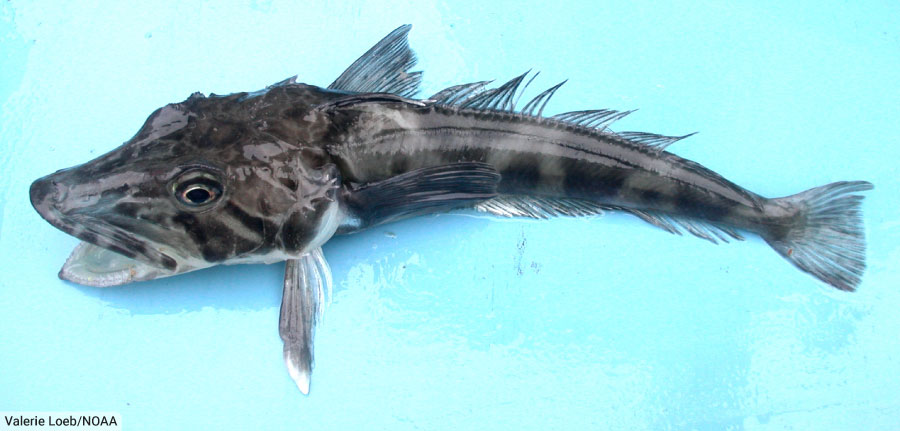
Scientific name: Chaenocephalus aceratus
Family: Channichthyidae
IUCN conservation status: Not Evaluated
The Ocellated Icefish, also known as the Pearly Icefish, is a weird fish species found in the Southern Ocean surrounding Antarctica. It is a member of the family Channichthyidae, which are collectively known as the icefishes due to their ability to survive in extremely cold waters.
Unlike most fish species, the Ocellated Icefish lacks hemoglobin in its blood, which makes its blood appear white and gives it a translucent appearance. This adaptation is possible because the cold water can hold more oxygen than warmer water, so the fish is able to obtain enough oxygen from the water without the need for red blood cells.
The Ocellated Icefish primarily feeds on krill and other small crustaceans.
Discover More With Active Wild
You can see more Antarctic animals on this page: Antarctic Animals
Psychedelic Frogfish
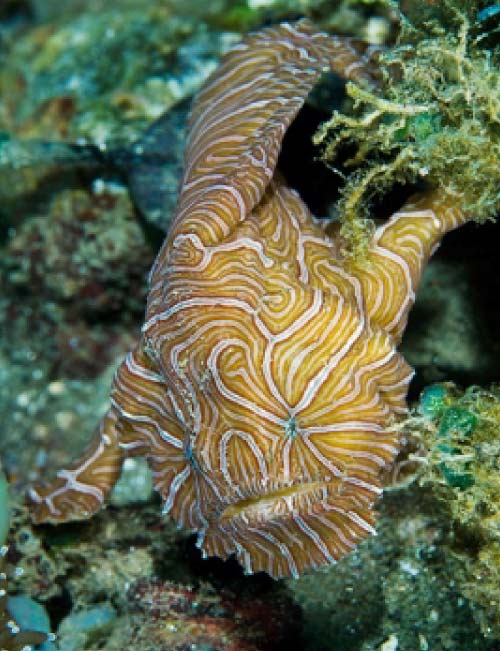
Scientific name: Histiophryne psychedelica
Family: Antennariidae
IUCN conservation status: Not Evaluated
We’ve already covered frogfish earlier in this list of weird fish, but the psychedelic frogfish gets a special mention due to its psychedelic appearance.
The species is found in the waters of Ambon Island, and other Indonesian islands. It belongs to the frogfish family Antennariidae, all of which are predatory anglerfish
The Psychedelic Frogfish is named for its strikingly bright and vibrant coloration, which includes bold patterns of red, yellow, and white. It has a flattened body, a large mouth, and a lure on its head with which it attracts prey.
This weird fish is relatively small, reaching a maximum length of only about 9 centimeters. Despite its eye-catching appearance, little is known about the ecology or behavior of this species.
Discover More With Active Wild
You can see more Asian animals on this page: Asian Animals
Red-Bellied Piranha
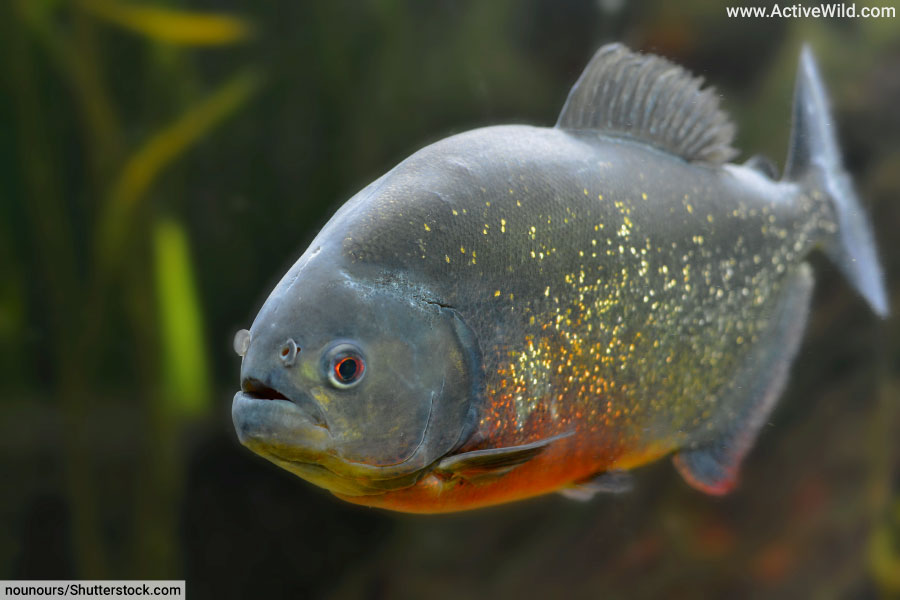
Scientific name: Pygocentrus nattereri
Family: Serrasalmidae
IUCN conservation status: Unassessed
Piranhas are freshwater fish found in rivers and lakes in South America. The red-bellied piranha is one of the largest species of piranha, with exceptionally large individuals reaching lengths of 50 cm (20 in).
Like all piranhas, the red-bellied piranha is a squat, powerful fish, armed with a mouthful of sharp teeth. The species is an omnivore, eating plants as well as a variety of small to medium-sized animals, including fish, worms, and even mammals and birds.
The piranha’s fearsome reputation is not quite deserved; although piranhas do occasionally enter feeding frenzies while consuming a large prey animal, they are not apex predators and are just as likely to be prey to larger predators.
Discover More With Active Wild
You can find out more about piranhas on this page: Piranha Facts
You can see more South American animals on this page: South American Animals
Red-Lipped Batfish

Scientific name: Ogcocephalus darwini
Family: Ogcocephalidae
IUCN conservation status: Least Concern
The Red-Lipped Batfish is a species of fish found in deep waters around the Galapagos Islands and off the coast of Peru. It belongs to the family Ogcocephalidae, which also includes other batfish species.
One of the world’s weirdest-looking fish, the Red-Lipped Batfish is named for its distinctive bright red lips, which contrast with its mottled brown body. It has a flattened body, a wide head, and a pair of modified pectoral fins that it uses to "walk" along the seafloor.
The Red-Lipped Batfish is a carnivore, feeding primarily on small invertebrates and crustaceans. The species is not currently threatened, and due to its deep water habitat, is protected from the effects of El Niño.
Discover More With Active Wild
You can see more ugly animals on this page: Ugly Animals List with Pictures & Facts
Sawfish
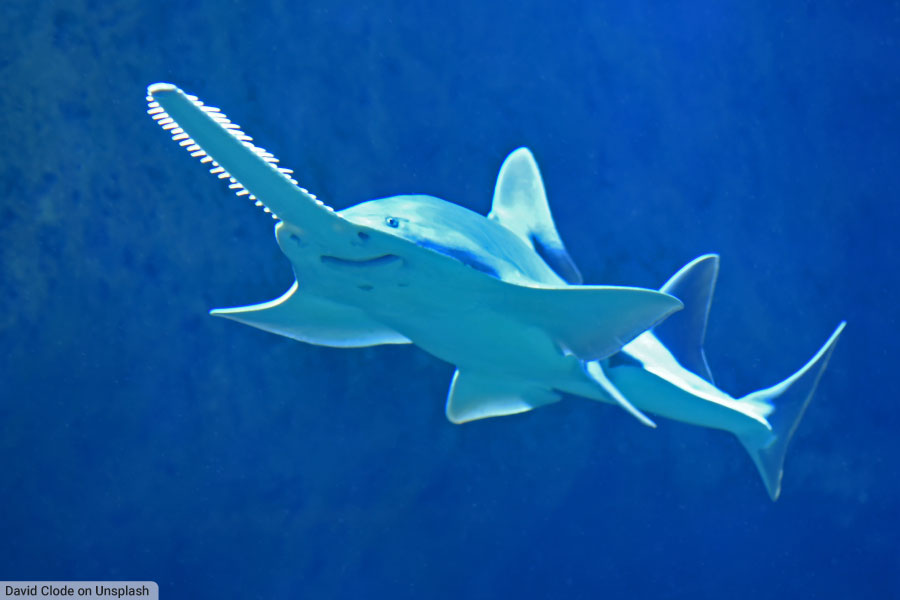
Scientific name: Pristidae (family)
IUCN conservation status: See text
Sawfish are a group of ray-like fish belonging to the family Pristidae. Also known as carpenter sharks, they are characterized by their amazing long, flat, tooth-lined snouts, which are used to detect and stun prey.
Sawfish are found in coastal waters of the Atlantic and Indo-Pacific. Five different species of sawfish are currently recognized by scientists. All are endangered, four of the five critically so. Sawfish are threatened by overfishing, habitat loss, and incidental capture in fishing gear. Unsurprisingly, sawfish are highly-valued for their unique saw-like snouts and other body parts, including their fins, which are used in shark-fin soup.
Discover More With Active Wild
You can see more endangered animals on this page: Endangered Animals
You can see more critically endangered animals on this page: Critically Endangered Species
Stargazer
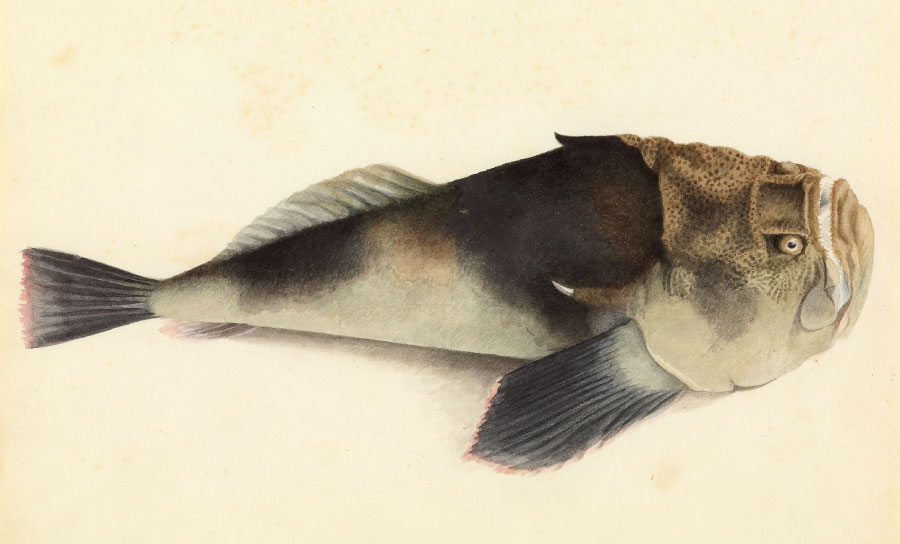
Scientific name: Uranoscopidae (family)
The 53 recognized species (source) of stargazer make up the family Uranoscopidae. These weird fish are known for their unique and unusual appearance; their large, upward-facing eyes appear to be looking up at the stars. The eyes, and the fishes’
The eyes, and the fishes’ flattened, bony head and upturned mouth are adaptations for ambush hunting. A stargazer’s modus operandi is to bury itself in the sand and launch itself at its unsuspecting prey.
Stargazers have venomous spines on their back and gill covers that they use for defense. As if the stargazers’ weird appearance wasn’t enough, some are also able to produce electricity to shock their prey.
Stargazers are found in both saltwater and freshwater habitats, including coral reefs, sandy bottoms, and estuaries. The different species of stargazers vary in size and coloration.
An example of a stargazer is the whitemargin stargazer, Uranoscopus onnah, which is found in the tropical and subtropical waters of the Indo-Pacific region, ranging from the Red Sea to the western Pacific Ocean.
Discover More With Active Wild
You can see more ocean animals on this page: Ocean Animals List with Pictures & Facts
Yellow Boxfish
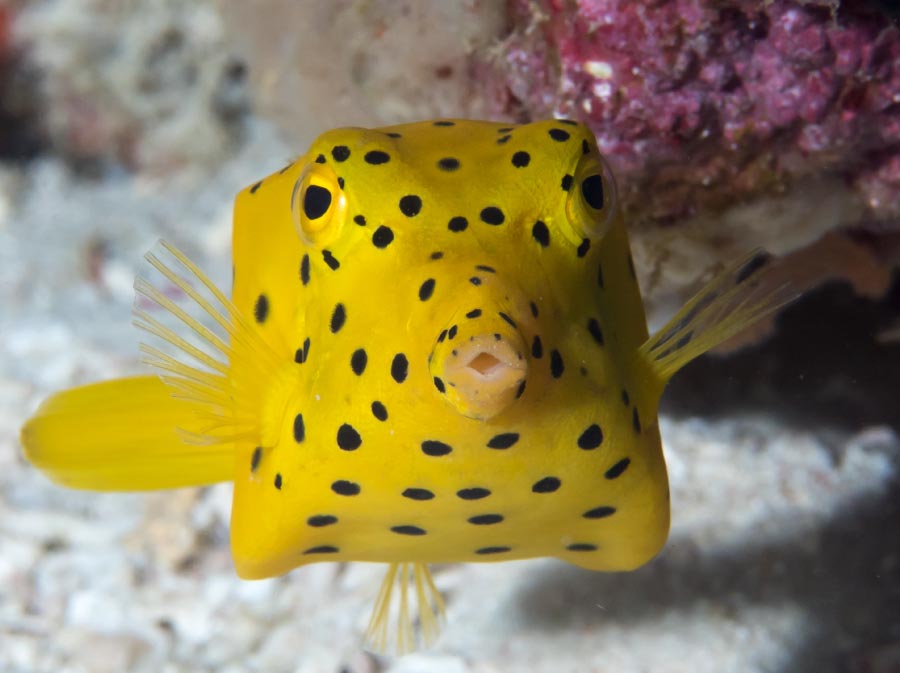
Scientific name: Ostracion cubicus
IUCN conservation status: Least Concern
The Yellow Boxfish, also known as the Cube Boxfish or Yellow Trunkfish, is a species of marine fish belonging to the family Ostraciidae. It is found in the shallow tropical and subtropical waters of the Atlantic Ocean, ranging from the eastern coast of the United States to South America and throughout the Caribbean Sea.
The body of this weird fish is box-shaped and covered in bony plates, which provide protection from predators. The Yellow Boxfish is bright yellow in color with a black spot on its dorsal fin, and can grow up to 45 cm in length. The species feeds mainly on algae and small invertebrates.
Discover More With Active Wild
You can see more animals that inhabit the world's oceans on this page: Ocean Animals List with Pictures & Facts
Discover More With Active Wild
You can see more weird animals on this page: Weird Animals - Pictures & Facts
You can find out more about fish on this page: Fish – The Ultimate Guide
Discover different types of fish on this page: Types of Fish

